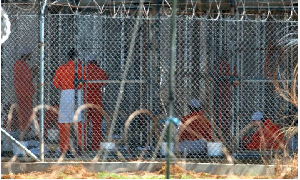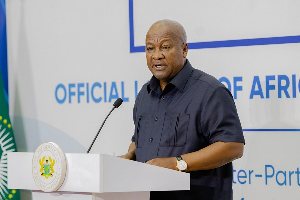The Pentagon has released a Tunisian detainee held in Guantanamo Bay since the first day the notorious prison camp opened in 2002 without ever being charged.
Ridah bin Saleh al-Yazidi was repatriated from the United States military prison in Cuba to Tunisia on Monday, the US Department of Defense said in a statement.
The transfer is the fourth in two weeks by the outgoing Biden administration in a quest to reduce the military prison’s population, which held 40 prisoners when Biden took office in 2020.
Al-Yazidi was “determined transfer-eligible by a rigorous interagency review process”.
“On Jan 31, 2024, Secretary of Defense [Lloyd] Austin notified Congress of his intent to support this repatriation and, in consultation with our partner in Tunisia, we completed the requirements for responsible transfer,” the Pentagon said.
Al-Yazidi, 59, was never charged with a crime by the US and was approved for transfer more than a decade ago, but no agreement with Tunisia’s government was made until now to bring him home.
Pakistani soldiers seized al-Yazidi near the border with Afghanistan in December 2001, and he was suspected of being an al-Qaeda fighter, The New York Times reported.
Twenty-six detainees remain at Guantanamo Bay with 14 eligible for transfer, the statement said.
Three inmates are eligible for a periodic review of their status, seven are currently involved in the military commissions process, and two detainees have been convicted and sentenced, it added.
Al-Yazidi was sent to the prison the day it opened on January 11, 2002, to house detainees captured during the US’s so-called “war on terror” after the September 11, 2001, attacks.
Located at the US military base in Cuba, the prison operates under a legal system led by military commissions that do not guarantee the same rights as traditional US courts.
Inmates cleared for release sometimes spend years at Guantanamo as Washington looks for countries to take them after they are freed, with some governments unwilling to take them back or in.
Guantanamo Bay once housed nearly 800 prisoners, many of whom initially spent time at covert CIA locations known as “black sites” where some were tortured under an “enhanced interrogation” programme authorised by former President George W Bush’s administration.
The facility became a lasting symbol of US abuses during that era. President Barack Obama, who succeeded Bush, promised to close down the facility, but he failed largely because of legal technicalities and domestic political opposition.
Africa News of Tuesday, 31 December 2024
Source: aljazeera.com













